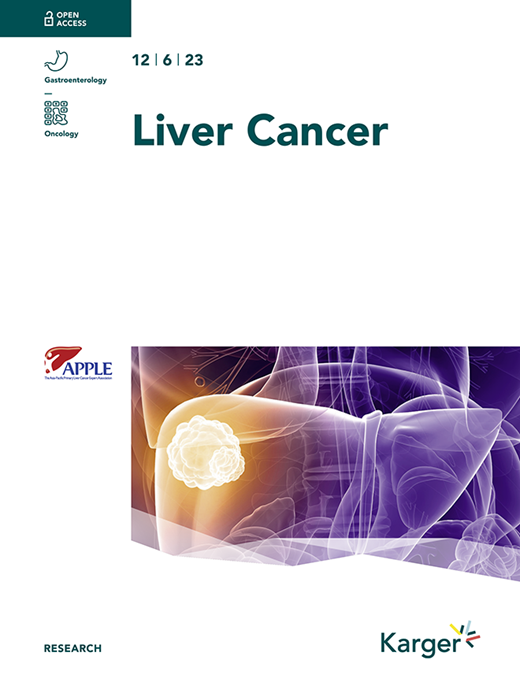PHOCUS:Pexa-Vec(JX-594)和索拉非尼对晚期肝细胞癌患者进行序贯治疗的 3 期随机、开放标签研究
IF 11.6
1区 医学
Q1 GASTROENTEROLOGY & HEPATOLOGY
引用次数: 0
摘要
简介对肝细胞癌(HCC)患者进行pexa-vec(pexastimogene devacirepvec)(一种溶瘤和免疫治疗疫苗病毒)瘤内给药,可产生局部和远处肿瘤反应。我们假设,随后使用索拉非尼治疗可显示出更优越的疗效。研究方法这项随机III期开放标签研究评估了晚期HCC患者使用pexa-vec后再使用索拉非尼与索拉非尼进行序贯治疗的疗效比较。主要终点是总生存期(OS)。主要次要终点包括进展时间(TTP)、无进展生存期、总反应率(ORR)和疾病控制率(DCR)。对所有接受≥1次研究治疗的患者进行安全性评估。研究结果该研究在16个国家的142个地点进行。从2015年12月30日到2019年8月2日的中期分析,459名患者被随机分配(pexa-vec加索拉非尼:234人,索拉非尼:225人)。在中期分析中,pexa-vec 加索拉非尼治疗组的中位 OS 为 12.7 个月(95% CI:9.89,14.95),索拉非尼治疗组的中位 OS 为 14.0 个月(95% CI:11.01,18.00)。这导致研究提前结束。佩沙韦克加索拉非尼治疗组和索拉非尼治疗组的中位TTP分别为2.0个月(95% CI:1.77,2.96)和4.2个月(95% CI:2.92,4.63);ORR分别为19.2%(45例患者)和20.9%(47例患者);DCR分别为50.0%(117例患者)和57.3%(129例患者)。pexa-vec加索拉非尼治疗组和索拉非尼治疗组分别有117例(53.7%)和77例(35.5%)患者报告了严重不良事件。肝功能衰竭是两组中最常见的不良反应。结论pexa-vec联合索拉非尼的序贯治疗并没有增加晚期HCC的临床获益,而且与单独使用索拉非尼相比效果更差。检查点抑制剂附加价值的出现应指导溶瘤病毒治疗策略的进一步发展。本文章由计算机程序翻译,如有差异,请以英文原文为准。
PHOCUS: A Phase 3, Randomized, Open-Label Study of Sequential Treatment with Pexa-Vec (JX-594) and Sorafenib in Patients with Advanced Hepatocellular Carcinoma
Introduction: Intratumoral administration of pexa-vec (pexastimogene devacirepvec), an oncolytic and immunotherapeutic vaccinia virus, given to patients with hepatocellular carcinoma (HCC), is associated with both local and distant tumor responses. We hypothesized subsequent treatment with sorafenib could demonstrate superior efficacy. Methods: This random phase III open-label study evaluated the sequential treatment with pexa-vec followed by sorafenib compared to sorafenib in patients with advanced HCC and no prior systemic treatment. The primary endpoint is overall survival (OS). Key secondary endpoints included time to progression (TTP), progression-free survival, overall response rate (ORR), and disease control rate (DCR). Safety was assessed in all patients who received ≥1 dose of study treatment. Results: The study was conducted at 142 sites in 16 countries. From December 30, 2015, to the interim analysis on August 2, 2019, 459 patients were randomly assigned (pexa-vec plus sorafenib: 234, sorafenib: 225). At the interim analysis, the median OS was 12.7 months (95% CI: 9.89, 14.95) in the pexa-vec plus sorafenib arm and 14.0 months (95% CI: 11.01, 18.00) in the sorafenib arm. This led to the early termination of the study. The median TTP was 2.0 months (95% CI: 1.77, 2.96) and 4.2 months (95% CI: 2.92, 4.63); ORR was 19.2% (45 patients) and 20.9% (47 patients); and DCR was 50.0% (117 patients) and 57.3% (129 patients) in the pexa-vec plus sorafenib and sorafenib arms, respectively. Serious adverse events were reported in 117 (53.7%) patients in the pexa-vec plus sorafenib and 77 (35.5%) patients in the sorafenib arm. Liver failure was the most frequently reported in both groups. Conclusion: Sequential pexa-vec plus sorafenib treatment did not demonstrate increased clinical benefit in advanced HCC and fared worse compared to sorafenib alone. The advent of the added value of checkpoint inhibitors should direct any further development of oncolytic virus therapy strategies.
求助全文
通过发布文献求助,成功后即可免费获取论文全文。
去求助
来源期刊

Liver Cancer
Medicine-Oncology
CiteScore
20.80
自引率
7.20%
发文量
53
审稿时长
16 weeks
期刊介绍:
Liver Cancer is a journal that serves the international community of researchers and clinicians by providing a platform for research results related to the causes, mechanisms, and therapy of liver cancer. It focuses on molecular carcinogenesis, prevention, surveillance, diagnosis, and treatment, including molecular targeted therapy. The journal publishes clinical and translational research in the field of liver cancer in both humans and experimental models. It publishes original and review articles and has an Impact Factor of 13.8. The journal is indexed and abstracted in various platforms including PubMed, PubMed Central, Web of Science, Science Citation Index, Science Citation Index Expanded, Google Scholar, DOAJ, Chemical Abstracts Service, Scopus, Embase, Pathway Studio, and WorldCat.
 求助内容:
求助内容: 应助结果提醒方式:
应助结果提醒方式:


